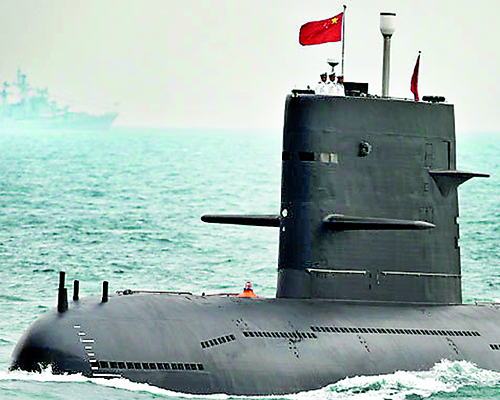Sunday Times 2
Shanghai to San Francisco in 100 minutes
China is developing a’supersonic’ submarine that could travel from Shanghai to San Francisco in less than two hours.
Researchers say their new craft uses a radical new technique to create a ‘bubble’ to surround itself, cutting down drag dramatically.
In theory, the researchers say, a supercavitating vessel could reach the speed of sound underwater, or about 5,800km/h.
The technology was developed by a team of scientists at Harbin Institute of Technology’s Complex Flow and Heat Transfer Lab.
Li Fengchen, professor of fluid machinery and engineering, told the South China Morning Post he was ‘very excited by its potential’.
The new sub is based on Soviet technology developed during the cold war.
Called supercavitation, it envelopes a submerged vessel inside an air bubble to avoid problems caused by water drag.
A Soviet supercavitation torpedo called Shakval was able to reach a speed of 370km/h or more – much faster than any other conventional torpedoes.
In theory, a supercavitating vessel could reach the speed of sound underwater, or about 5,800km/h, which would reduce the journey time for a transatlantic underwater cruise to less than an hour, and for a transpacific journey to about 100 minutes, according to a report by California Institute of Technology in 2001.
The Chinese system constantly ‘showers’ a special liquid membrane on its own surface.
Although this membrane would be worn off by water, in the meantime it could significantly reduce the water drag on the vessel at low speed.
After its speed had reached 75km/h or more the vessel would enter the supercavitation state, Li said.
However, Li admitted problems still needed to be solved before supersonic submarine travel became feasible.
A powerful underwater rocket engine still needs to be developed.
The technique could even be used to aid swimmers, he believes.
‘If a swimsuit can create and hold many tiny bubbles in water, it can significantly reduce the water drag; swimming in water could be as effortless as flying in the sky,’ he said.
© Daily Mail, London
| HOW IT WORKS
The new sub is based on Soviet technology developed during the cold war. Called supercavitation, it envelopes a submerged vessel inside an air bubble to avoid problems caused by water drag. A Soviet supercavitation torpedo called Shakval was able to reach a speed of 370km/h or more – much faster than any other conventional torpedoes. In theory, a supercavitating vessel could reach the speed of sound underwater, or about 5,800km/h, which would reduce the journey time for a transatlantic underwater cruise to less than an hour, and for a transpacific journey to about 100 minutes, according to a report by California Institute of Technology in 2001. |

